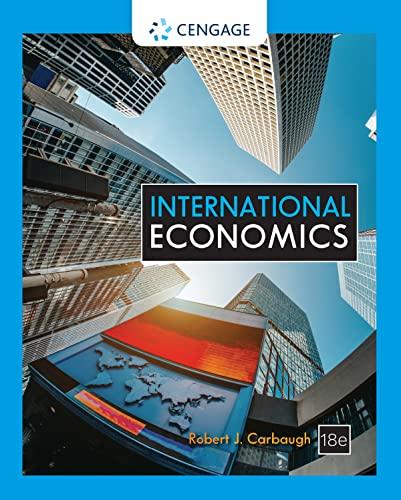Global economic downturns are often a catalyst for trade protectionism. As economies shrink, nations have incentives to
Question:
Global economic downturns are often a catalyst for trade protectionism. As economies shrink, nations have incentives to protect their struggling industries by establishing barriers against imported goods. During the Great Depression of the 1930s, the United States increased import tariffs on some 20,000 goods, which was followed by other countries raising their trade barriers (including tariffs, import quotas, and exchange controls) against the United States. This contributed to a collapse in world trade and a deepening of the global economic slump. However, during the Great Recession of 2007- 2009, there was much less resorting to trade barriers than during the Great Depression. Why? Today, economic historians recognize that the severe protectionism of the 1930s was not simply motivated by the desire for relief from foreign competition. Instead, it was also the result of government officials' reluctance to abandon the gold standard and allow their currencies to depreciate. As discussed in Chapter 15, under the gold standard, a country tied the value of its currency to a particular amount of gold. This meant that the exchange rate between any two currencies on gold was also fixed, which provided businesses certainty about the terms on which international trade would be conducted. Therefore, maintaining the fixed exchange rates of the gold standard was a goal that many governments clung to during the Great Depression.
Many governments were unable to use monetary and fiscal policy to stimulate weak economies; monetary policy was constrained by the gold standard and fiscal policy by the balanced budget doctrine that government spending should be reduced in conjunction with falling tax revenues. Because exchange rate depreciation, monetary policy, and fiscal policy were ruled out as economic adjustment mechanisms, policymakers turned instead to higher trade barriers as a means of restricting imports and bolstering a weak economy. During the 1930s, governments had relatively few policy instruments, other than protectionism, for dealing with economic downturns thus, the widespread use of protectionism.
In contrast, countries that went off the gold standard and allowed their currencies to depreciate did not have to resort to protectionism.
However, by 2007-2009, governments had expanded their arsenal of economic adjustment mechanisms. Many countries had flexible exchange rates, which meant currency depreciation helped reduce trade deficits. Expansionary fiscal and monetary policies were widely used to stimulate weak economies during the Great Recession, although their success is debatable.
Countries are much more integrated into the global economy than in the 1930s, and it is widely understood that trade disruptions caused by protectionism would be much more costly. What's more, the composition of the labor force has greatly changed from agriculture and manufacturing to services. This means that fewer workers are directly affected by international trade and the constituency for protectionist policies is smaller than in the past.
Finally, countries have signed agreements and are members of institutions such as the World Trade Organization and the North American Free Trade Agreement, which are intended to promote free trade. Of course, trade protectionism around the globe increased during the Great Recession. However, the protectionist response to this recession was relatively muted.
What do you think? Why do countries sometimes implement increased trade barriers during economic downturns?
Step by Step Answer:






